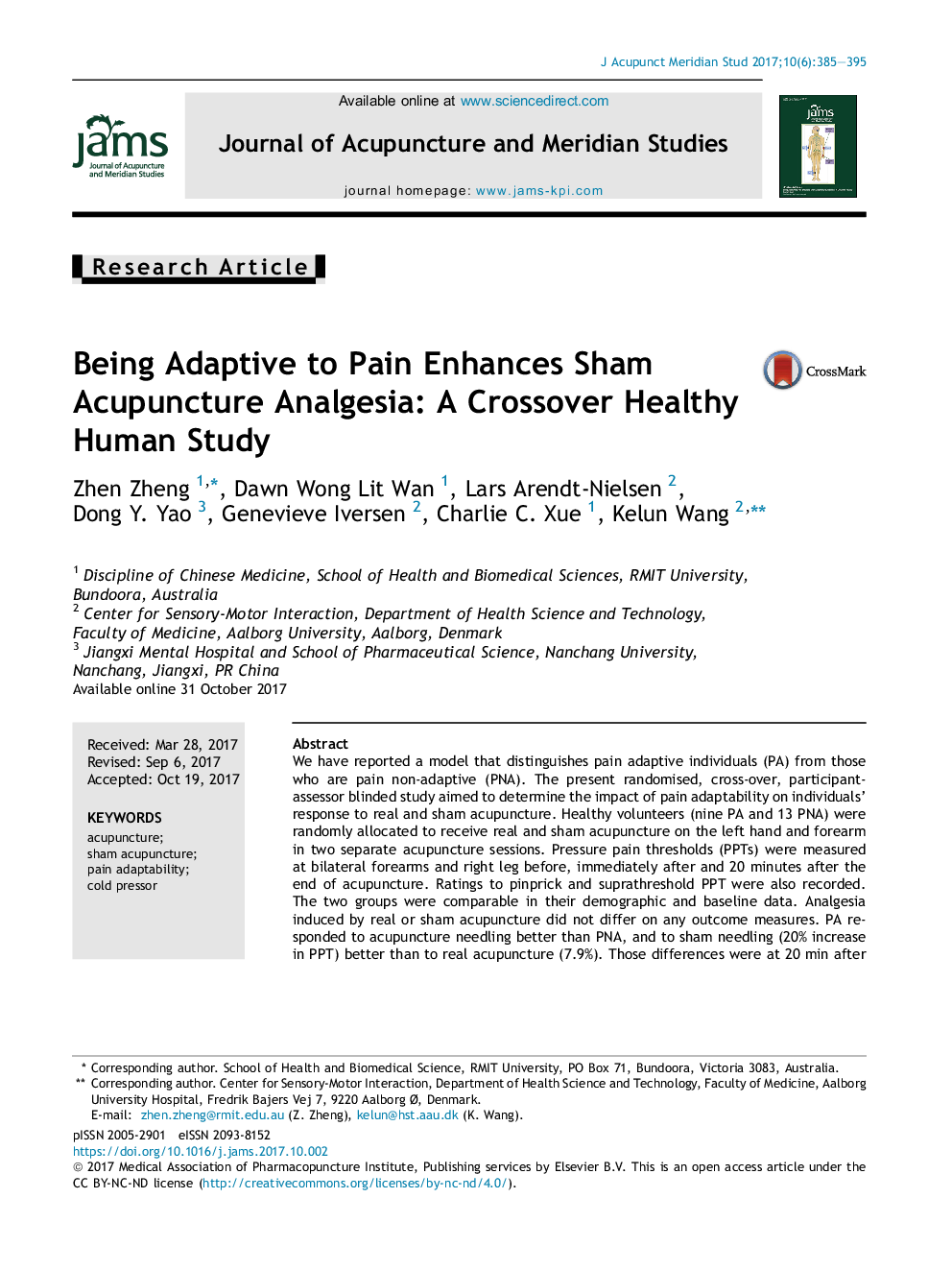| Article ID | Journal | Published Year | Pages | File Type |
|---|---|---|---|---|
| 8692523 | Journal of Acupuncture and Meridian Studies | 2017 | 11 Pages |
Abstract
We have reported a model that distinguishes pain adaptive individuals (PA) from those who are pain non-adaptive (PNA). The present randomised, cross-over, participant-assessor blinded study aimed to determine the impact of pain adaptability on individuals' response to real and sham acupuncture. Healthy volunteers (nine PA and 13 PNA) were randomly allocated to receive real and sham acupuncture on the left hand and forearm in two separate acupuncture sessions. Pressure pain thresholds (PPTs) were measured at bilateral forearms and right leg before, immediately after and 20 minutes after the end of acupuncture. Ratings to pinprick and suprathreshold PPT were also recorded. The two groups were comparable in their demographic and baseline data. Analgesia induced by real or sham acupuncture did not differ on any outcome measures. PA responded to acupuncture needling better than PNA, and to sham needling (20% increase in PPT) better than to real acupuncture (7.9%). Those differences were at 20 min after end of acupuncture in the areas distant to the needling sites. PNA reported little changes in PPT. Being adaptive to pain was associated with enhanced distant analgesia in response to sham acupuncture. Our finding might partly explain varied acupuncture analgesia in clinical practice and trials.
Related Topics
Health Sciences
Medicine and Dentistry
Complementary and Alternative Medicine
Authors
Zhen Zheng, Dawn Wong Lit Wan, Lars Arendt-Nielsen, Dong Y. Yao, Genevieve Iversen, Charlie C. Xue, Kelun Wang,
